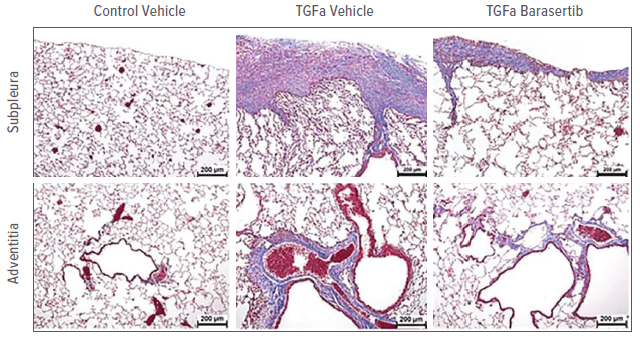Barasertib May Stop Scar Formation in Patients with Idiopathic Pulmonary Fibrosis
Published August 2020 | EMBO Molecular Medicine
Idiopathic pulmonary fibrosis (IPF) is a chronic, progressive lung disease that is usually fatal within three to five years after diagnosis. Currently, the only cure is lung transplantation—but a new discovery suggests that a powerful treatment may be within a few years of launching human clinical trials.
The pre-clinical study led by scientists at Cincinnati Children’s demonstrates that in mice, the drug barasertib reverses the activation of fibroblasts that cause dangerous scar tissue to build up in the lungs of people with IPF.
“This study is the first to identify barasertib as an anti-fibrotic candidate,” says Satish Madala, PhD. “That’s important because so far there are no treatments for IPF that appear to reverse the underlying process that causes the disease.”
In the new study, researchers found that a gene called aurora kinase B (AURKB) is expressed in high levels within the cells of lung scar tissue (also known as fibroblasts). This gene expression appears to be driven by multiple growth factors and a transcription factor called Wilms Tumor 1, the study states.
Once the team identified the involvement of barasertib, a known AURKB inhibitor, they explored the therapeutic relevance, underlying mechanistics, and target pathways related to pulmonary fibrosis. In mouse models, they found that treatment with barasertib caused faster cell death among fibroblasts, resulting in less scar tissue, improved lung elasticity, and overall better lung function.
Next, the team aims to determine whether targeting AURKB would be effective and safe enough to test in human patients, as well as explore alternative routes of administration to bypass systemic exposure and ensure targeted delivery of barasertib.
AURKB Inhibitor Reduces Scarring
Representative images of Masson’s trichrome-stained lung sections from the vehicle- and barasertib-treated mice. Images were obtained at 10× magnification. Scale bar: 200 μm.




